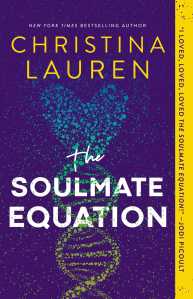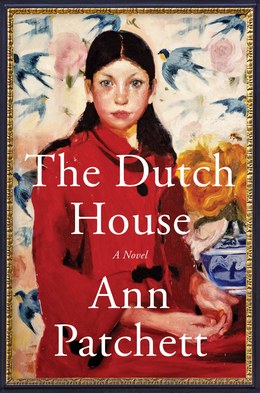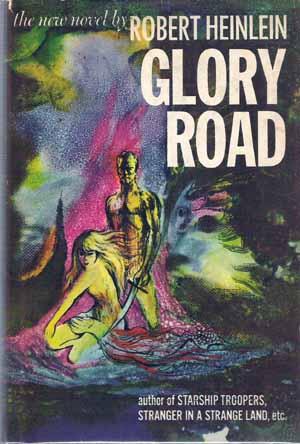Computer Dating
It’s been some time since computers got involved with dating. I don’t mean stories about romance with a robot—though those have been around for a long time too. I’m thinking about stories where a couple becomes involved with each other via some sort of computer intermediary.
We have a subgenre of tales where a couple meets on an online platform—perhaps via chatting, in You’ve Got Mail (1998), or gaming, as in Ready Player One and my own The World Around the Corner. And of course the proliferation of actual online dating services—I met my wife that way—lends itself to romantic comedy. Here, for example, is a list of the “10 best rom-coms about online dating,” which run the gamut from 1998-2021.
But we can even identify a sub-subgenre where the workings of the dating service itself are the basis for the meet-cute. In Love, Guaranteed (2020), a lawyer takes on the case of a man who wants to sue a dating site that guarantees true love. For the Christmas season, we have Mingle All the Way (2018), in which the designer of an app for busy people to find a plus-one without the stress of actual dating has to enroll in the app herself to convince an investor that the app is viable. She ends up, of course, finding much more than a temporary plus-one.
Computers Aren’t Magic
If we’re going to construct a story that genuinely deals with computer-guided matching of couples, we need to think seriously about what computers can and can’t do. It’s tempting just to wave around the word “algorithm” like a magic wand and assume that it can do all sorts of vaguely specified things—as if it were magic. Our imaginary computer setup is a “black box”: we don’t have to say how it works, it just somehow predicts which couples will get along.
Of course we can’t expect an author to produce an actual detailed account of how their hypothetical system works, any more than we expect any science fiction writer to tell us exactly how a faster-than-light drive would work, or an impenetrable force bubble. If the writer could provide all the specs, they could patent the product and retire comfortably. But, just as with any other SF premise, we have to make the imaginary invention plausible enough to engage the reader’s willing suspension of disbelief.
One recent rom-com, Christina Lauren’s The Soulmate Equation (2021), gets high marks for taking a sensible approach. Freelance statistician and data analyst Jessica Davis runs into River Peña, a scientist whose startup company “has developed a service that connects people based on proprietary genetic profiling technology” (p. 18). The technology is nothing so simple as a ‘love gene.’ Rather, in his initial study of over a thousand students, “a series of nearly forty genes were found to be tightly correlated with attraction” (p. 33). River then worked backward: “Could he find a genetic profile of people who had been happily married for longer than a decade?” (p. 33) The further research turned up “nearly two hundred genes that were linked to emotional compatibility long-term” (p. 34).
This has the sound of legitimate science. Sample sizes are given, and the statistical universe is large enough to have some plausibility. The imaginary research doesn’t establish why these gene sequences are related to compatibility: it merely finds a correlation, which has yet to be explained. And the number of genes involved indicates that the relationship must be highly complex. The company’s tests (which sound rather like a 23 and Me arrangement) don’t claim to predict romantic love with precision; they yield a percentage probability that two people will match well, from “Base Matches” up to 24% to “Titanium Matches” at 80-90%, and even three examples of “Diamond Matches” with a score higher then 90%. If such testing were really possible, this sounds like a plausible account of how it would work.
Jessica takes the test on a dare, more or less, and (of course) is found to be a Diamond Match with River Peña himself, whom she’s already found a bit off-putting. She warily agrees to try out a relationship with him, and hilarity ensues in classic romantic-comedy fashion. It’s a delightful story, and the air of plausibility about the company and its compatibility testing helps support the reader’s enjoyment.
The Gene Factor
One of the reasons this superficial plausibility is important is that the underlying idea is so volatile. Do we really believe a couple’s potential for romance could be predicted from their genome? On the one hand, we find ourselves wanting to say that love is ineffable. Romantic love is famously supposed to be unpredictable, unexplainable, defying reason. On the other hand, we do also tend to feel that romantic compatibility rests on some kind of perceptible factors, and also that true love is somehow fated, that lovers are “made for each other.” And given the limited but impressive successes modern biology has had in connecting genes to physical results, the genome is a tempting place to look for that kind of manifest destiny.
Whether we find that hypothesis likely will depend partly on whether we find the materialist theory convincing: that human beings and their behavior can be entirely reduced to their physical structure. Materialist approaches are widespread today, but one can also reasonably take the position that there are human characteristics not wholly reducible to biology. (Even the book’s title refers to “soulmates,” not merely sexmates.)
But let’s say it’s plausible enough that at least the initial attractiveness of one person to another might be encoded in their genes. I even recall reading somewhere that whether we like or dislike the way a certain person smells may be a wired-in indicator of genetic compatibility, which makes some evolutionary sense. Can we generalize that notion, as Dr. Peña’s research is supposed to have done, to a genetic basis for long-term compatibility?
The Other Factors
Even on a physical basis, we are not merely a product of our genes. While the “nature versus nurture” battle continues to simmer, we generally tend to be equally sure that our adult personalities are influenced by our cumulative life experiences as well as by our innate characteristics. Identical twins don’t turn out to be identical people, even when they grow up in similar environments, much less if they grow up separately. We can distinguish our temperament, the emotional potential we’re born with, from our “character,” the set of habits and tendencies and attitudes that owe a lot to experience and action over time.
Outward appearance that is all we initially have to observe about a potential mate, but these aspects are more internal. Necessarily, the internal factors are likely to come through more clearly as a relationship continues. We’ve noted that “love at first sight” is a common enough experience of the beginning of love, but that its genuineness can only be validated retrospectively, over time. Like the meet cute/meet hard situation, perhaps this can create the opportunity to fall, the initial attraction. But the basic attraction is at most only the beginning of the story—not the end. A couple’s ultimate compatibility is bound to depend on how their lives have shaped them as well as on their genetic endowments.
Even if nature and nurture combine to present a felicitous pairing, that’s still not the end of the story. We are not compelled to love someone. Irresistible attraction, sure: finding someone especially fetching may (or may not) be entirely beyond our control. But what we do about it isn’t. What we develop out of that basic orientation toward each other is what really matters.
Here, The Soulmate Equation gratifyingly takes the right tack. Responding to Jess’s skepticism about the significance of the test results, River says:
“I’ll believe the test if it says we are biologically compatible, but I’m not a scientific zealot, Jess. I recognize the element of choice. . . . No one is going to force you to fall in love with me.” (p. 130; see also p. 230)
Jess concludes: “Destiny could also be a choice, she’d realized. To believe or not, to be vulnerable or not, to go all in or not.” (p. 351)
So I’m doubtful in the end that Dr. Peña’s algorithm could work quite as well as the story suggests. Nonetheless, the book is an enjoyable romp, and also a thoughtful one. Any tale that helps us think more insightfully about the puzzles of romantic love is a stimulating as well as an entertaining read.





